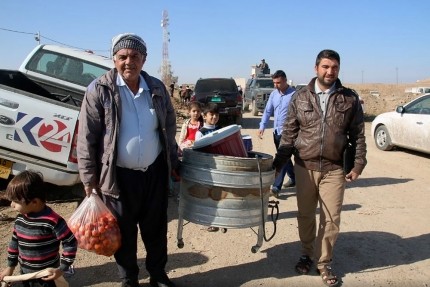
28 December 2016 – Since operations began to retake the Iraqi city of Mosul from the Islamic State of Iraq and the Levant (ISIL) two months ago, some 114,042 people have been displaced and as many as one million are out of reach of humanitarian assistance.
According to the latest report from the UN Office for the Coordination of Humanitarian Affairs (OCHA), the ongoing conflict has rendered it is impossible to state a definitive estimate on the number of people who are still living in ISIL-controlled areas.
However, the humanitarian community is concerned that conditions for these communities are deteriorating, as basic goods have not been replaced in western parts of the city since the city’s supply routes were closed last month.
Of particular concern is the safety and security of children, as more than 50,000 have been affected due to the Mosul military operation and surrounding conflict. Hamida Lasseko, Deputy Representative of the UN Children’s Fund (UNICEF) in Iraq, told UN News that the agency is working with the Iraqi Government to provide basic services, psychosocial support, and education to children.
“This is going to be our main area of focus – to advocate for the education of children. This will also help to keep the children safe: they will be protected from being recruited, affected from the armed conflict, and they will also be able to access their basic rights,” she said.
“We continue to ask all those who are involved in the conflict to leave children to grow as children so that they have a normal life,” Ms. Lasseko said, emphasizing that “they should stop using children for the benefit of the war.”
For those who are now living at camps, humanitarian assistance includes basic services such as clean drinking water, latrines, medical assistance. OCHA emphasized that providing new plots to accommodate people who have recently fled is an urgent priority: just last week, an additional 10,170 people were displaced.
However, security incidents have threatened aid operations in eastern Mosul. On 22 December, three suicide car bombs exploded in Gogchali, an area on the eastern outskirts of the city adjacent to the main access route. These explosions were in addition to mortar fire that killed aid workers and beneficiaries. just a few days earlier, as well as a significant uptick in trauma injuries over the past month.
Meanwhile, flooding due to ongoing rains has threatened water safety, and the arrival of winter brings dropping temperatures and harsher conditions. UN agencies and stakeholders are working to ensure that civilians have adequate protection from the cold, and one NGO is building a field hospital to shorten ambulance journeys and reduce pressure on Erbil hospitals.
GAIN IS WORKING IN IRAQ. IF YOU WOULD LIKE TO READ MORE ABOUT OUR RELIEF EFFORTS, CLICK HERE.
Image Source: Photo: WFP/Alexandra Murdoch
Article Source: http://www.un.org/apps/news/story.asp?NewsId=55884
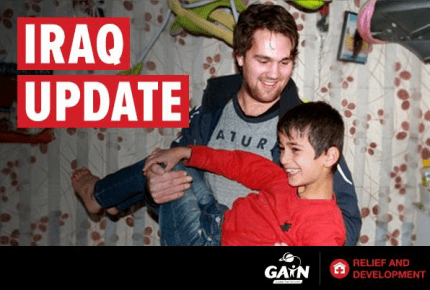
Saleem is your average ten-year-old boy who likes playing soccer and running around. But three years ago, while his family was fleeing from Mosul, IS fighters caught up to them. They took his father aside and gave him an ultimatum: either convert to Islam immediately or come with them. In order to protect his family, Saleem’s father chose to leave his loved ones. No one has seen or heard from him since.
“They took his father aside and gave him an ultimatum: either convert to Islam immediately or come with them.”
On Tuesday, December 13, GAiN’s DART (Disaster Assistance and Response Team) members arrived on location near Erbil, Iraqi Kurdistan to distribute emergency relief to IDPs (Internally Displaced People) and refugees, people like Saleem and his family, from Mosul and Baghdad.
The team is distributing more than 1000 mattresses, blankets and pillows to people entering the Debaga refugee camp with nothing more than the clothes on their backs. They are also preparing to distribute food packages in Al-Karma and Al-Amal within the next few days.
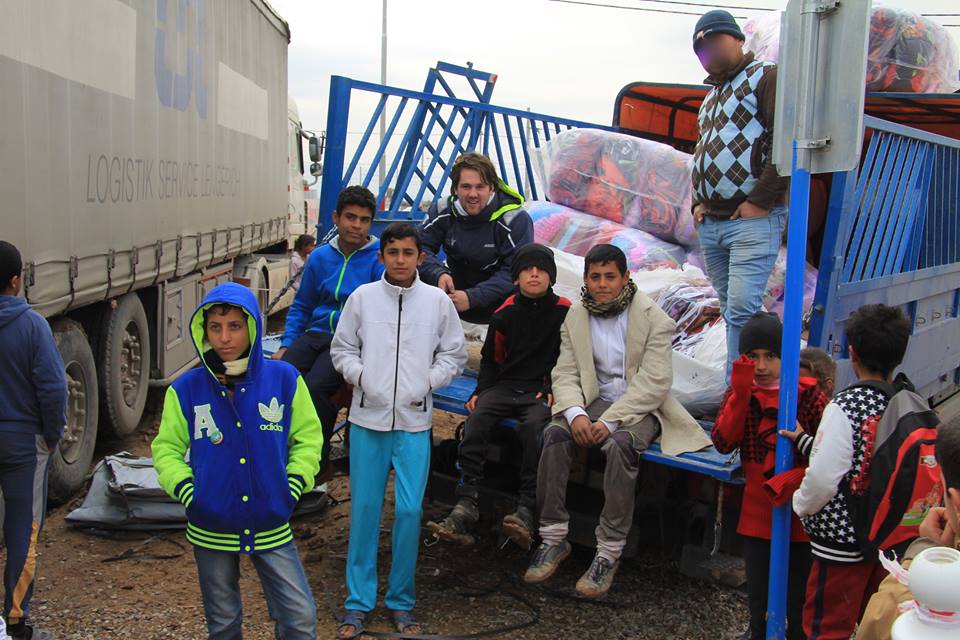
Since October 17, 90,100 people have been displaced from Mosul and have fled to Erbil and Ankawa with the need for food, water and non-food essentials, such as warm clothes and heaters to get through the cold Iraqi winter.
Team members attended a women’s meeting with a local partner at an “improvised container church” outside of Erbil. About 60 women gathered to hear from a psychologist, who has worked with refugees for years, on dealing with suffering and pain. The psychologist not only spoke on scientific matters, but also shared her personal story about finding hope in Jesus. There, team members helped distribute Christmas gifts in the form of cookies, bringing a bit of light and normalcy to a dark situation.
As of now, the end is nowhere in sight. There is still a great need for daily essentials (food, water, shelter and clothing) and the urgency of the needs has only intensified, as winter has arrived.
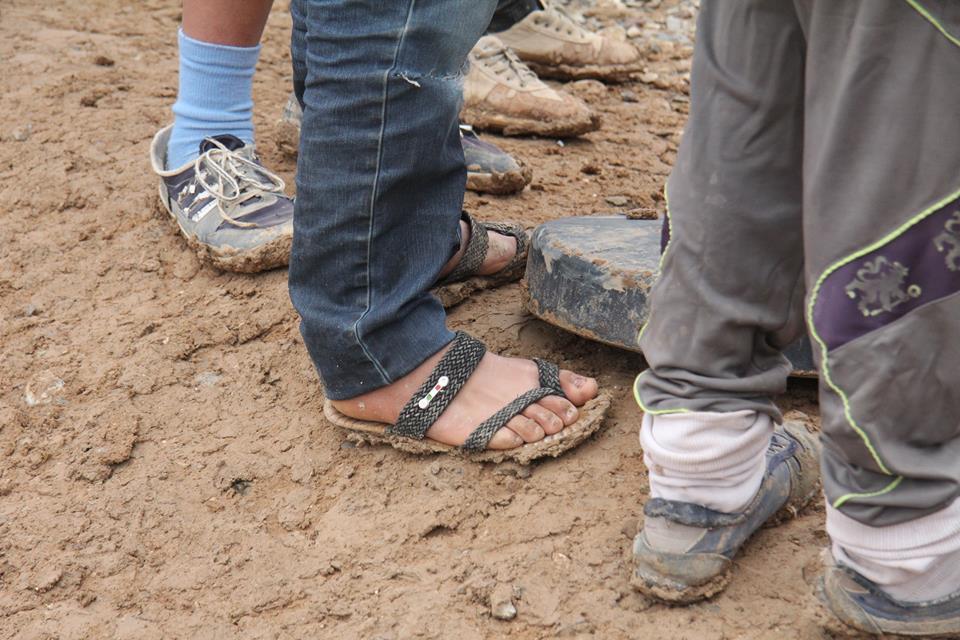
While Canadians experience cold winters, those in Iraq without shelter and proper clothing are at great risk. Providing fuel for heating, blankets and heaters are a high priority, as more than half of people displaced are children under 18-years-old.
Rick from the Netherlands was in Erbil in 2014 to distribute relief in refugee camps. Upon his return, he made a hopeful observation:
“Two years ago the whole city was crowded with improvised refugee camps. In almost every school building, park or church you could find a refugee camp. By now, a lot of these camps are gone. People have found shelter in houses or the refugee camps are transformed to long-term facilities. Tents are replaced by containers and in the unfinished buildings there are apartments built in. It still doesn’t meet my conditions for having a decent life, but it is intriguing to see how people are able to fall down four times, but stand up five. Even coming from the most miserable circumstances people manage to make the best out of their lives.”
“…it is intriguing to see how people are able to fall down four times, but stand up five. Even coming from the most miserable circumstances people manage to make the best out of their lives.”
We still have matching funds available up to the end of the year, which doubles every gift given, and our plan is to continue working with our local partner into the New Year.
IF YOU WANT TO GET INVOLVED WITH OUR RELIEF WORK IN IRAQ, CLICK HERE.
*Name changed for safety reasons.
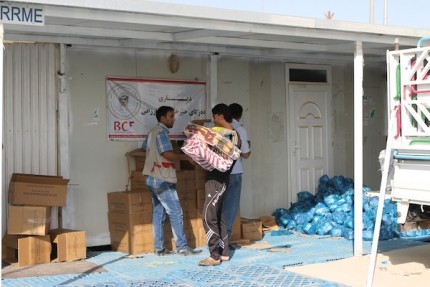
“I’m still in shock; the situation was very, very, very bad,” Simon* told me, the day after their first visit to Debaga Camp at the end of July. “Yesterday I was taking photos, interviewing people, and crying. I had heard about the situation, but didn’t imagine it was so terrible.”
A Christian IDP from Mosul, Simon is no stranger to the trauma of imposed flight from a feared “enemy”, the harsh new realities you’re forced to confront along the way, and the longer term harsh reality awaiting you once you arrive at relative safety. But even he was at a loss for words to describe his experience at Debaga Camp.
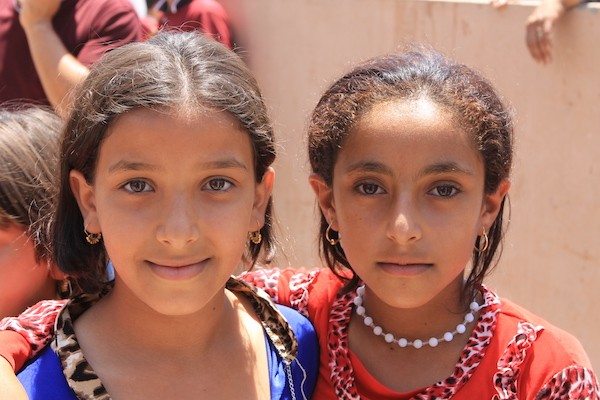
The majority, if not all, of these families are Muslims displaced from their towns and villages as a result of the military offensive as the Iraqi army coalition continues to make progress in its fight to remove ISIS from Iraq, and specifically its stronghold in Mosul.
Debaga Camp, located on the edge of the Kurdistan Region (an autonomous region of Iraq, significantly more stable and secure than the rest of Iraq), was originally built in late 2015 and hosted about 3,300 people, a number that has increased tenfold. At the end of July, the registered IDPS numbered over 29,000. As of late October, Debaga is host to over 32,000 individuals, with over 58,000 having passed through the camp since March.
“I’ve never seen people so desperate for food—‘Just give me one!’,” said Simon. “We were distributing materials (water, ice, fruit, bread, baby food) and they didn’t run out, we just kept distributing…like the loaves and fish! We need God always—He’s providing people, connections, He’s doing everything.”
The population of Debaga Camp has exploded over the past several months, placing it far above capacity and forcing a second and third location to be hastily constructed. Resources—water, sanitation and hygiene, shelter, food—are scarce, but organizations are doing their best to provide these basic necessities to people within the first hours of their arrival.
Our partner on the ground was able to take responsibility for a section of the camp, and distributed blankets, the nutritious dried soup mix and dried fruit donated by Fraser Valley Gleaners (which is GAiN’s partner) to 5000 families.
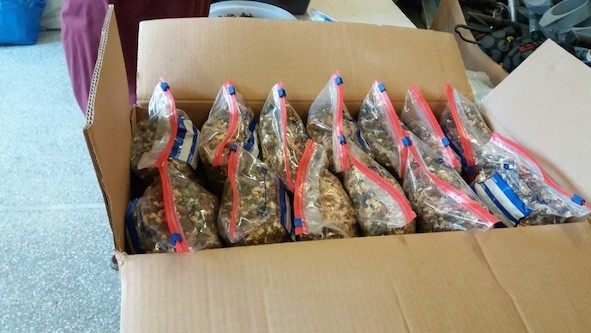
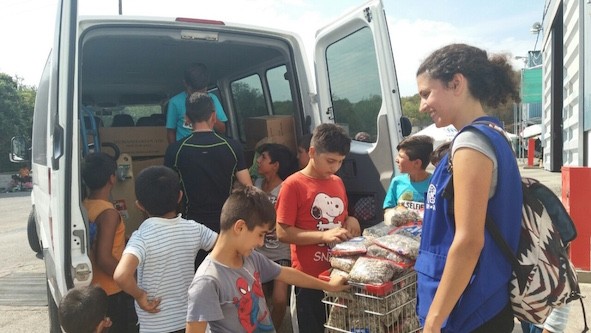
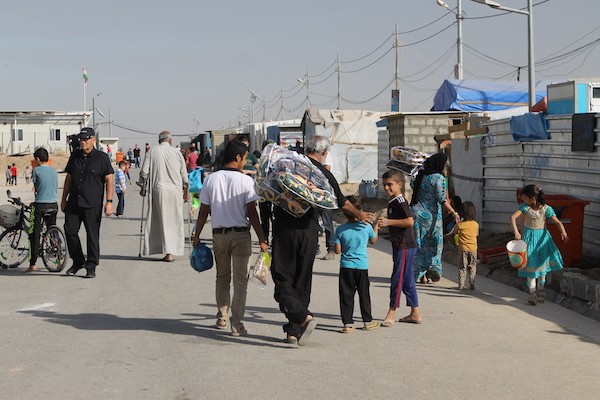
The blankets were crucial to these families living exposed to the chill of the desert nights, and the rapidly approaching chill and wet of winter. The soup mix and dried fruit were a great boost to the limited diet of these persecuted people.
The war in Syria has raged on for over five years, with 4.8 million people fleeing the violence, carrying little more than hope. Thousands of Syrians have made the journey across the Mediterranean Sea to Greece.
In June 2016, GAiN Netherlands transported five pallets of Fraser Valley Gleaners’ dried soup mix to Thessaloniki in Greece. In Thessaloniki, GAiN Netherlands works in partnership with the Apostolic church, caring for 1,500 Syrian refugees.
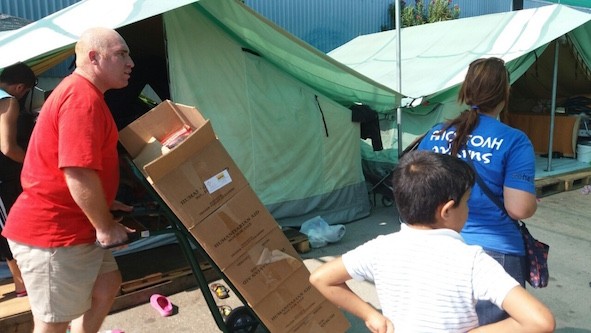
GAiN offices around the world seek to come alongside these suffering people and demonstrate the love of God, in word and deed, from Ukraine to Paraguay, to the refugee camps in Serbia and Greece, and to the IDP camps in Iraq. Without
the partnership and generosity of Fraser Valley Gleaners, thousands of refugees and displaced people would continue to be need of healthy sustenance.
On behalf of the refugees and displaced people, THANK YOU to all the volunteers, staff and leadership at Fraser Valley Gleaners.
IF YOU WANT TO KNOW MORE ABOUT OUR RELIEF WORK IN IRAQ, CLICK HERE.
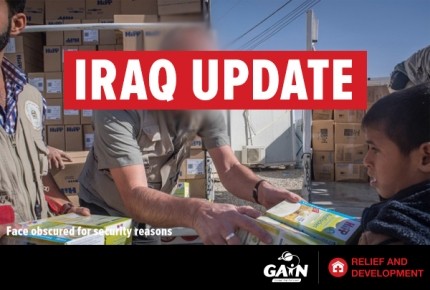
This letter is to update you on the situation in Mosul, Iraq since the battle to liberate Mosul began on October 17th.
We have been able to provide much-needed help for the Iraqi people in need, thanks to donors like you.
From November 17-22, GAiN sent an assessment team to Iraq. During their time in country, they witnessed devastating sights and experienced horrifying sounds and smells.
Along with the over three million displaced Iraqis since 2014, the recently liberated town of Qaraqosh (eight kilometers from Mosul) was also devastated. Explosives and fire destroyed every single private home, the infrastructure was intentionally abolished and every one of the ten churches there…obliterated. Deliberate attacks of Christian faith were evident as crosses atop churches were smashed, Christian literature burned and graffiti tagging the churches with phrases like “we love death as you love life” and “Christianity has ended here.”
“Qaraqosh is reminiscent of the 2010 earthquake destruction in Haiti except this was entirely man-made and evil,” shares one of the team members.
Our staff visited two new camps holding over 100,000 people and there they were able to distribute humanitarian aid consisting of rice, baby cereal, and winter clothing.
However, the need is still overwhelming and very real as witnessed first-hand by the staff. And, as the devastation continues to grow, the need grows also.
We have expanded our relief programs with the local partners on the ground to provide further help through its Disaster Assistance and Response Team (DART).
A preliminary plan has been put into action. With the onset of winter, this plan addresses several basic human needs ranging from providing water, food, warm clothing and hygiene packets.
We urge you to help us, bring aid to the thousands who have been devastated and traumatized by this horrific attack and restore hope to them by demonstrating God’s love during this Christmas season.
YOUR GIFT TODAY WILL BE DOUBLED BY A DONOR MATCH!
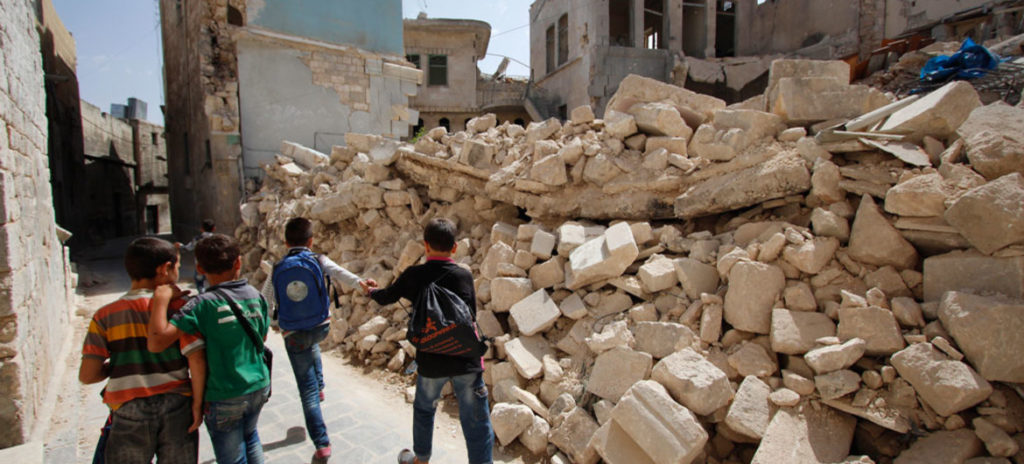
10 November 2016 – The United Nations humanitarian envoy for Syria today urged actions to stave off the threat of mass hunger in eastern Aleppo before the arrival of winter that he fears could be “a real killer” for a quarter of a million people trapped there.
“The fifth war winter is starting in Syria. There is no doubt it will be the worst in this cruel war, and I fear it will be a real killer in too many places,” Jan Egeland, Special Advisor to the UN Special Envoy for Syria, told reporters in Geneva.
“Some of the areas are freezing cold, horrible conditions, and people will be in need of digging themselves down in the ground in extreme cases,” he said, explaining that humanitarian convoys are being blocked physically or administratively from reaching them, or they cannot depart because of crossfire or insecurity.
He said that the last time eastern Aleppo was reached with significant humanitarian supplies was the beginning of July and reports imply that the last food rations are being distributed now. “There will not be more to distribute next week,” he said.
Mr. Egeland said that the UN put forward a humanitarian initiative last week, which has been translated into Arabic and presented to the negotiating parties, including Russia, the Syrian Government and the armed opposition groups.
He said that the initiative calls for four actions to save the people in eastern Aleppo: distribution of medical supplies to the medical facilities; medical evacuations for the estimated 300 or so patients, together with their families; delivery of food and other urgent humanitarian relief supplies; and dispatch of more personnel to provide medical relief.
“None of the four elements are conditional on the others,” he said.
“Having heard back from the [humanitarian] taskforce today, we are hopeful that both sides will, since the situation is so horrendous as it is, grant us the opportunity to both come with supplies into east Aleppo, and evacuate wounded and others out of east Aleppo,” he said.
The International Syria Support Group (ISSG) has established the respective taskforces on humanitarian aid delivery and a wider ceasefire. They have been meeting separately since early this year on a way forward in the crisis. Russia and the United States are the co-chairs of the taskforces and the ISSG, which also comprises the UN, the Arab League, the European Union and 16 other countries.
“I do not think anybody wants a quarter of a million people to be starving in east Aleppo,” he said. “I do believe we will be able to avert mass hunger this winter.”
There are also hardships in western Aleppo, which can still be reached with aid, he said, warning that civilians there are dying every single week from the continued fighting.
Mr. Egeland also noted that the situation has not gotten better in the other besieged areas.
As for Madaya, Zabadani, Foah and Kafraya under the ‘Four Towns Agreement,’ all relief into these areas and medical evacuations out have been paralyzed because of the “conditioning” between Iran and Ahrar al-Sham.
“I have not seen a place where there has been so much politicization, manipulation of aid, as we have seen in Syria in recent months. It has to stop,” he said.
IF YOU WOULD LIKE TO KNOW WHAT GAIN IS DOING REGARDING THE SYRIAN CRISIS, CLICK HERE.

“I held a baby who had been left in the dump, being eaten by rats, and my heart broke again; this time seeing starving children and animals [in] the conditions that they live in and the suffering they endure because they cannot access simple medical care,” Sherri said of her first and then her most recent trip to Haiti with a GAiN LIFE Team.
It was from a young age that Sherri knew her calling was to serve the needy overseas. While searching for mission organizations, she came across GAiN and felt its mission statement aligned with her calling. With further digging, she discovered that there was an upcoming LIFE Team to Haiti which would provide the chance to lead children’s camps and do medical check-ups at Ca-Ira Orphanage and the surrounding community of Leogane.
“I had served in Haiti [on another trip] a few years ago and God broke my heart for the people of Haiti. To be able to return to this resilient country was an answer to prayer.”
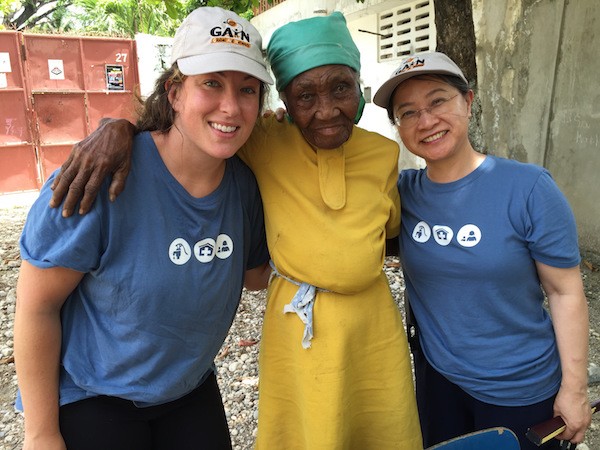
Sherri’s skills as an emergency nurse proved valuable to the medical portion of the trip, where the medical team (consisting of Sherri, a physician and translator) conducted hygiene and sanitation seminars, performed medical check-ups and provided basic medical care at Ca-Ira Orphanage and the outside community.
When she wasn’t doing medical check-ups or health teachings, Sherri helped lead children’s camps where she got to interact with hundreds of kids while running the bracelet-making station.
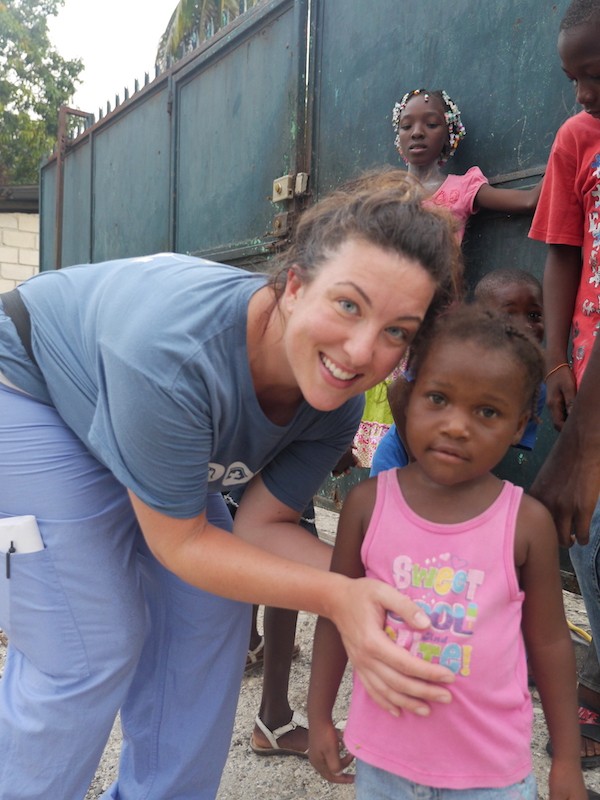
The chance to demonstrate God’s love also came in a variety of other ways, including a day of construction work at the orphanage, doing outreach in the community by distributing bags of food to families living in extreme poverty, praying for them and inviting them to a screening of the JESUS Film.
“[On] our last day there, driving back to the airport, I was still stunned by the piles of garbage everywhere and the lawlessness of the country. Yet, despite extremely difficult circumstances, they are a resilient people who have so little, yet, will share anything they do have. They gather for hours to worship God with no time limit. Instead of focusing on their pain, they turn to God, wholeheartedly and rely on Him to meet their needs.”
“The trip far exceeded any expectations that I did have,” Sherri stated. Her experience on the LIFE Team only intensified her desire to continue demonstrating the love of God to the broken.
“As an emergency nurse, I often see that life is full of unknowns and I cannot encourage you enough to just go, taking this pause in the midst of your busy life, to serve the hurting and needy people [for] a chance to show God’s love in ways that would not be possible otherwise.”
WOULD YOU LIKE TO HAVE A SIMILAR EXPERIENCE AS SHERRI’S? CLICK HERE TO CHECK OUT OUR UPCOMING LIFE TEAM PROJECTS.
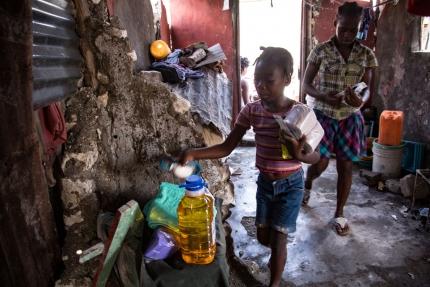
4 November 2016 – As Haiti struggles to recover from the massive destruction wrought by Hurricane Matthew, which pummelled the tiny island one month ago today, the United Nations warned that while its seems as if “the world has moved on,” Haiti’s needs are vast, exemplified by the nearly 600,000 children being stalked by disease, hunger and malnutrition and in need of assistance.
“One month after the hurricane, life for more than half a million children in Haiti is still far from back to normal,” said Marc Vincent, Haiti Representative for the UN Children’s Fund (UNICEF), in a news release. “Too many children are still homeless, hungry, out of school and in danger. We are scaling up our response and are determined to help as many of them as possible as fast as we can.”
UNICEF said there have been at least 1,000 suspected cholera cases among children in the past month. Out of 219 cholera treatment centres in the country, 18 have been damaged in the worst-hit departments of Grand’Anse and South, further complicating efforts to contain the disease.
The total destruction the Category 4 storm inflicted on crops, food stock and livestock in some of the worst affected areas have left over 800,000 people in need of immediate food assistance and more than 112,000 children at risk of acute malnutrition.
An estimated 50,000 children have been left homeless and are staying in temporary shelters. Another 3,500 children living in institutions need help accessing nutrition, water and sanitation services.
More than 700 schools have been affected and about 86 schools have been used as temporary shelters, causing school disruption for at least 150,000 children.
UNICEF is working with national and other partners to provide basic assistance to the most vulnerable children. They are providing 100,000 people a day with safe water, organizing a cholera vaccination campaign that will be launched next week to immunize up to 900,000 people, and providing cholera prevention kits that contain water purification tablets, soap and oral rehydration salts. Between 100 and 200 kits are distributed every day.
In addition, they are delivering an integrated package of services to prevent and treat malnutrition among children under five as well as pregnant and breastfeeding mothers living in the hurricane affected areas, replenishing vaccines and restoring the cold chain so that routine immunization can resume in the health centres that are still operational and in mobile clinics, and distributing emergency medical supplies to 18 health centres.
Joint actions also include setting up mobile child friendly spaces where vulnerable children and families can receive psychosocial support, and training 60 volunteers to staff them, and repairing 22 schools and distributing school-in-a-box and early childhood development kits so that children can resume their learning as soon as possible.
UNICEF requires over $23 million through the end of the year to meet children’s humanitarian needs following the hurricane, including for the cholera response. So far, it has received a mere $6 million.
Jens Laerke, spokesperson for the Office for the Coordination of Humanitarian Affairs (OCHA), told reporters in Geneva that, according to the latest figures from the authorities in Haiti, Matthew has so far caused 546 deaths and left 438 people injured.
He said that needs are vast, especially in the areas of quality water, education, shelter, child protection, health and nutrition. A total of 1.4 million people are in need of humanitarian assistance, and an estimated 40 per cent of them are children. The UN emergency humanitarian appeal for $120 million is far only 33 per cent funded.
Haiti needs support to restore, rebuild health services
Haiti needs support to restore and rebuild its health services at various levels, ranging from cholera treatment centers to community health centers to major hospitals, according to Dr. Jean-Luc Poncelet, the Pan American Health Organization/World Health Organization (PAHO/WHO) representative in Haiti.
In the country’s South, “the government faces challenges in restoring health facilities in affected areas and urgent repairs to restore functionality have been identified,” he said.
In Sud Department, 28 per cent of health facilities sustained severe damage and eight per cent are closed, while in Grand’Anse, 43 per cent of health facilities were severely damaged and seven per cent are closed. Of the 74 cholera and acute diarrhea treatment facilities in Haiti, 34 are fully functional, while 40 sustained various levels of damage.
Restoring health services to a functional level requires not only fixing structures, but providing electricity and water and sanitation, as well as helping many health workers who themselves have been severely affected by the hurricane’s destruction, according to the Haiti Ministry of Public Health.
“The major needs are to renovate existing health structures with durable repairs, to increase humanitarian assistance to rural areas, and to improve water quality and sanitation,” Mr. Poncelet said.
The latest figures from the Haitian government show that 175,509 Haitians are still living in shelters, while more than 1.4 million people are in urgent need of humanitarian assistance.
PAHO/WHO teams identified five priority areas of action for the health sector, estimating that $9 million in emergency funding is needed to carry out essential activities.
These priorities are: restoration of health care delivery capacity and access to health services in the most affected areas; increased epidemiological surveillance to support early detection and timely management of disease outbreaks; intensification of vector-control and protective environmental health measures in impacted areas; rapid and effective response to cholera outbreaks in affected communities; and support for efficient coordination of humanitarian assistance and management of information to effectively address the most urgent humanitarian needs.
A vaccination campaign is planned to start Nov. 8, targeting 820,000 people in 16 communes affected by Hurricane Matthew and that have reported cholera cases or deaths. To prevent additional cholera cases, which are likely to increase in the rainy season from now until December, it is also important to advance on water purification, health promotion, and sanitation at the same time.
Bettina Luescher, spokesperson for the World Food Programme (WFP), said that the agency has delivered food to 400,000 people, as part of its work to support the Government in its work. The situation is dire on the ground, with huge logistical challenges, but together with its partners WFP has reached people by truck, helicopter and boat.
Some 140,000 people are still displaced and living in temporary shelters. The food situation is worrisome: in areas hit by the hurricane crops have been destroyed, along with livestock and seeds, local markets are running out of food and the prices of imported goods are rising.
The planting season is supposed to happen this month and will be affected, which meant in turn that the next harvest, in the early months of 2017 will be affected. WFP aims to reach 800,000 people. In order to do that, it has appealed for $58 million overall and still needs $40 million urgently.
(Source)
(Image Source: UNICEF/Roger LeMoyne)
IF YOU WANT TO KNOW MORE ABOUT HOW GAIN IS WORKING IN HAITI, CLICK HERE.

It’s been more than six years since Haiti was hit with a 7.0 magnitude earthquake on January 12, 2010. About 316,000 people were killed, one million people lost their homes and 100,000 children became orphans. The living quarters of Ca-Ira Children’s Village, an orphanage on the coast of Leogane (the epicentre of the quake) was shaken to the ground – resulting in the death of five orphans and two staff.
After providing emergency relief and running medical clinics with volunteers during the first six months after the earthquake, we decided to get involved in reconstructing Ca-Ira, knowing that it would be a long-term project. This initiative was led by GAiN Germany with support and contributions from other GAiN offices.
We played a key role in not only providing funding but also sending in staff and volunteer LIFE teams 2-3 times a year to help with the reconstruction efforts. As of April 2016, we sent a total of 19 LIFE Teams (180 total participants) to Haiti since the earthquake. This includes volunteers who were involved in emergency relief, as well as construction.
Our Project Associate Sam Bechard first visited Haiti with a LIFE Team in 2012 and the country was still in crisis mode – even two years after the earthquake. “When we drove outside, we saw house after house underground. We still saw the devastation and the suffering on the faces of people. They lost family members, a few staff and children. They couldn’t talk too much about the earthquake at that time – it was too fresh. They were [still] in shock and in survival mode.”
At the time, there were just temporary structures built since the earthquake: a temporary kitchen with a roof, put together from a few pieces of wood; a tiny, crammed room that served as a temporary dorm for 30 kids; a church without a roof; and a temporary bathroom. Reconstruction for permanent buildings had just started.
Fast forward to 2016 and a few new buildings have been completed: a new girls’ dorm and boys’ dorm, a guesthouse and kindergarten buildings.
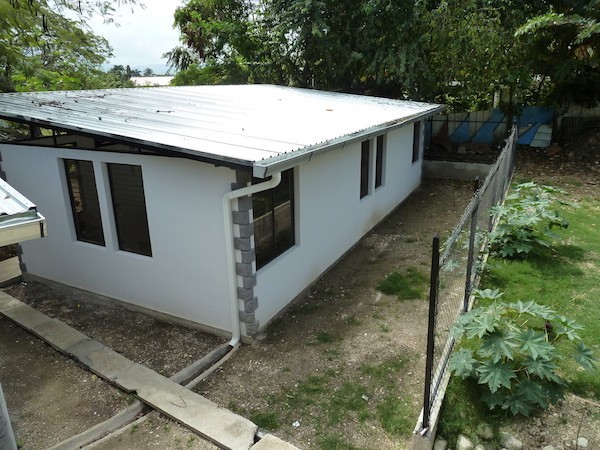
Hardworking local teams, LIFE team volunteers from various GAiN offices, and even former children from the orphanage helped in the construction.
In January 2016, an opening and dedication ceremony was held to celebrate the completion of the kindergarten. Staff and children from the Ca-Ira, as well as delegates from the US and GAiN Germany were in attendance.
The children now have a safer learning environment – a major upgrade from the old, tiny, moldy shack that served as a temporary learning space. The new kindergarten is made of two buildings, which consists of three classrooms and two teachers’ rooms. The buildings are brighter and more spacious (96 sq. m, compared to the 15 sq. m shack) and were designed to cool down temperatures and reduce the amount of mosquitos in the building.
While reconstruction is a priority, we recognize the importance of not just rebuilding the structures that collapsed, but also rebuilding the community by investing in the education and development of the children.
For the past three summers, our LIFE Teams have been running a children’s camp for two weeks for children in the orphanage and surrounding community. Kids get to participate in Bible lessons, worship services, arts and craft stations and team games.
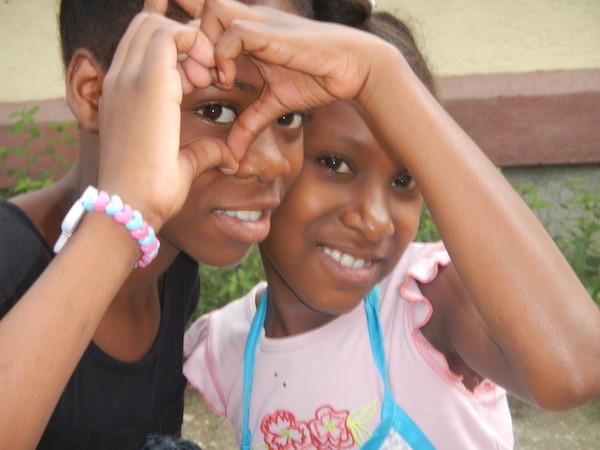
It’s also at these summer camps that some of the older kids from Ca-Ira get the opportunity to practice their leadership skills and become role models to younger kids. This group of young leaders, in their early to midteens, are called the Battalion. GAiN has been involved in training these kids to develop their skills in areas such as leadership, sharing the gospel and public speaking. Bechard has seen significant growth in these kids, including their involvement in the kids’ camps, outreach projects, community service, and setting up for screenings of the JESUS Film.
Some of the Battalion kids grew up in Ca-Ira decided to stay after graduation so they could use their skills to give back to the community that played a part in their upbringing.
“We are investing in the next generation and their future,” Bechard explains. “This orphanage will raise the next generation of leaders, musicians, school teachers, and business men.”
Our work at Ca-Ira also extends into serving the surrounding community. One of those ways is distributing small food packages to families in the Ca-Ira community, surrounding the orphanage. LIFE teams join members of the local church, along with a translator, and hand out packages of food containing practical items such as rice, oil, sugar and salt.
“The packages aren’t large, but they are enough to be a helpful blessing to families in the area that are struggling to provide for their families,” explains Lindsay Schacter, LIFE Teams Manager. “Oftentimes, the teams are able to visit some of the same families previous teams have visited, providing an opportunity to build ongoing relationships between our team and the Ca-Ira church with community members.”
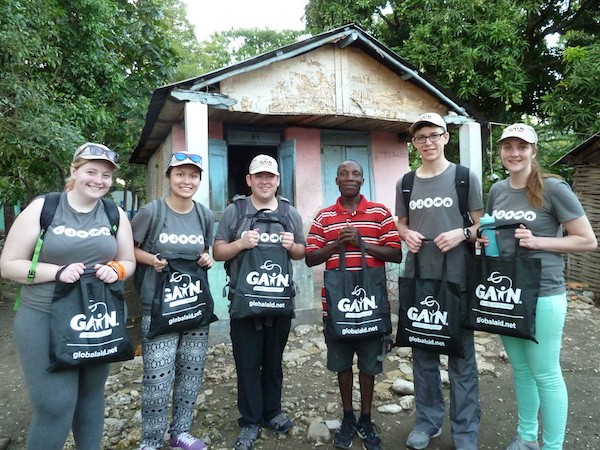
Another way that we are investing in the community is through community health programs and medical clinics.
We run mobile medical clinics onsite at Ca-Ira, giving the children an opportunity to see a doctor. In 2015, nurses were able to perform a basic health check on all the children at the orphanage.
“From running mobile clinics in various locations in Haiti over the past five years, we learned early on that one of the greatest needs in the area of health was not for clinics, but for basic health education,” says Schacter. “Mothers especially desire to care for their children and give them the best start in life but are often ill-equipped to care for them both through a lack of access to health care, but also simply through a lack of understanding about topics such as hygiene and sanitation, nutrition and the spread of illness.”
In 2015, our LIFE Team hosted community health education on different topics. There were training sessions for orphanage staff and an open session for members of the community, where they could learn and ask questions.
While a lot has been done, Schacter and Bechard acknowledge that there is still a lot of work to do in Haiti, the poorest country in the Western Hemisphere. But they are hopeful for the future after looking back at how far the orphanage and the people in the surrounding community have come since the earthquake.
“When I look to the future, I see our local staff and children becoming key leaders in the community,” says Bechard. “I remember when we planted some mango trees on the ground, around the building. After a few years, they are now growing and bearing fruit. [In the same way,] we started from nothing and needed to rebuild everything, but now our work [is bearing] fruit. We’re building a future where they had no hope. The children can now focus on their school, focus on playing music and dancing. They are back to being children, living in security, playing without fear and smiling like never before. They have a home.”
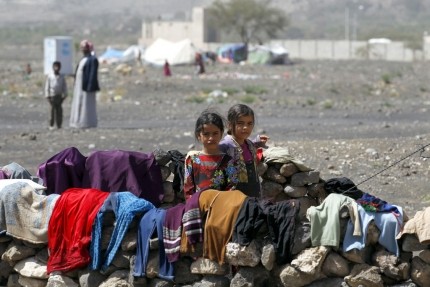
20 June 2016 – The number of people displaced from their homes due to conflict and persecution last year exceeded 60 million for the first time in United Nations history, a tally greater than the population of the United Kingdom, or of Canada, Australia and New Zealand combined, says a new report released on World Refugee Day today.
The Global Trends 2015 compiled by the Office of the UN High Commissioner for Refugees (UNHCR) notes that 65.3 million people were displaced at the end of 2015, an increase of more than 5 million from 59.5 million a year earlier.
The tally comprises 21.3 million refugees, 3.2 million asylum seekers, and 40.8 million people internally displaced within their own countries.
Measured against the world’s population of 7.4 billion people, one in every 113 people globally is now either a refugee, an asylum-seeker or internally displaced – putting them at a level of risk for which UNHCR knows no precedent.
On average, 24 people were forced to flee each minute in 2015, four times more than a decade earlier, when six people fled every 60 seconds.
Syria, Afghanistan and Somalia produce half the world’s refugees, at 4.9 million, 2.7 million and 1.1 million, respectively.
Colombia had the largest numbers of internally displaced people (IDPs), at 6.9 million, followed by Syria’s 6.6 million and Iraq’s 4.4 million.
While the spotlight last year was on Europe’s challenge to manage more than one million refugees and migrants who arrived via the Mediterranean, the report shows that the vast majority of the world’s refugees were in developing countries in the global south.
In all, 86 per cent of the refugees under UNHCR’s mandate in 2015 were in low- and middle-income countries close to situations of conflict.
Worldwide, Turkey was the largest host country, with 2.5 million refugees. In terms of the refugee-to-population ratio, Lebanon has the highest proportion, with nearly one refugee for every five citizens.
Distressingly, children made up an astonishing 51 per cent of the world’s refugees in 2015, with many separated from their parents or travelling alone, UNHCR said.
“Our responses to refugees must be grounded in our shared values of responsibility sharing, non-discrimination, and human rights and in international refugee law, including the principle of non-refoulement,” UN Secretary-General said in his message on the Day.
“World Refugee Day is a moment for taking stock of the devastating impact of war and persecution on the lives of those forced to flee, and honouring their courage and resilience,” he said, noting that it is also a moment for paying tribute to the communities and States that receive and host them, often in remote border regions affected by poverty, instability and underdevelopment, and beyond the gaze of international attention.
Last year, more than one million refugees and migrants arrived in Europe across the Mediterranean, in unseaworthy dinghies and flimsy boats. “Thousands did not make it – tragic testimony to our collective failure to properly address their plight,” Mr. Ban said.
He stressed that meanwhile, divisive political rhetoric on asylum and migration issues, rising xenophobia, and restrictions on access to asylum have become increasingly visible in certain regions, and the spirit of shared responsibility has been replaced by a hate-filled narrative of intolerance.
“With anti-refugee rhetoric so loud, it is sometimes difficult to hear the voices of welcome. But these do exist, all around the world,” he said, acknowledging an extraordinary outpouring of compassion and solidarity shown by host communities.
The UN chief drew attention to the General Assembly’s High-Level Meeting on addressing large population movements on 19 September, which he said will offer an historic opportunity to agree a global compact, with a commitment towards collective action and greater shared responsibility for refugees at its core.
This year, hopeful signs are hard to find
UN High Commissioner for Refugees, Filippo Grandi, said that each year, UNHCR seeks to find a glimmer of hope in the global statistics, but “this year the hopeful signs are hard to find.”
He warned that instead of burden sharing, nations are closing their borders and that instead of political will, there is political paralysis. And humanitarian organizations like his are left to deal with the consequences, while at the same time struggling to save lives on limited budgets.
Yet, there is cause for hope. Citing host communities, individuals, and families opening their homes, he said “these ordinary people see refugees not as beggars, competitors for jobs, or terrorists – but as people like you or me whose lives have been disrupted by war.”
“UNHCR sees 2016 as a watershed moment for the refugee cause,” he stressed. As wars spiral out of control, this must be a year to take collective responsibility and action to end the conflicts which force people to flee and also a year to help the millions of people whose lives have been destroyed by violence.
“World leaders can no longer watch passively as so many lives are needlessly lost,” he said, also noting that the upcoming General Assembly meeting on addressing large movements of refugees and migrants will put all to the test.
For its part, UNHCR launched last week the #WithRefugees initiative to generate momentum towards that meeting, he added.
Numbers do not capture hardship of displaced
Mogens Lykketoft, UN General Assembly President, said the numbers do little justice to the pain and trauma that this crisis is causing for individual women, men and children across our world.
“They fail to capture the hardship of those who flee and the fear of those who wait anxiously behind. They fail to capture the hopelessness of those held in detention centres or the final thoughts of those lost at sea without even a whisper,” he said.
He highlighted several points, including that the international community must intensify its efforts to find political solutions to conflicts, as they are the main drivers of humanitarian need. The UN and other institutions and agencies must be provided with sufficient and predictable resources needed to fulfil their mandates and respond to the incredible levels of need.
In 2014, children constituted 51 per cent of the refugee population, with half of these missing out on primary education, he said. The 2030 Agenda for Sustainable Development to leave no one behind has placed a new obligation on all to reach those in situations of conflict, disasters, vulnerability and risk.
Citing that almost nine out of every 10 refugees, 86 per cent, are in regions and countries considered economically less developed, he urged the international community to enhance its solidarity with refugee hosting countries.
Given the scale of the crisis, current levels of third-country resettlement need to be reviewed, he pointed out. In 2014, only 15 per cent of the global resettlement needs were met. At least fifty thousand persons, including thousands of children died in the past two decades while seeking to cross international borders. Governments must create safe, orderly and regular pathways for refugees to move to other countries.
Violations of international humanitarian and human rights law are of grave concern. All must speak out in the face of serious violations of international law. Xenophobic and racist rhetoric seems not only to be on the rise, but also to be becoming more socially and politically acceptable. This needs to change, he said.
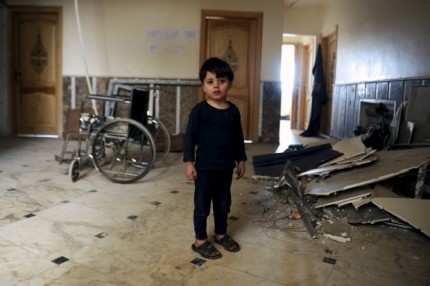
The United Nations envoy for Syria appealed to the U.S. and Russia to intervene to help revive Syrian peace talks that sputtered to a pause Wednesday, saying a recent spike in fighting has overshadowed the talks and put an increasingly feeble truce in “great danger.”
Staffan de Mistura spoke to reporters early Thursday after briefing the UN Security Council via videoconference about the largely stalled indirect talks between the Western- and Saudi-backed opposition and envoys from President Bashar al-Assad’s government, which has the backing of Moscow.
After 60 days, he said, the cessation of hostilities agreed to by both sides “hangs by a thread.”
“I really fear that the erosion of the cessation is unraveling the fragile consensus around a political solution, carefully built over the last year,” de Mistura said in his council briefing obtained by The Associated Press. “Now I see parties reverting to the language of a military solution or military option. We must ensure that they do not see that as a solution or an option.”
The current effort to end the five-year Syria conflict was largely spearheaded by U.S. Secretary of State John Kerry and Russian Foreign Minister Sergey Lavrov, backed by major global and regional powers who formed the International Syria Support Group. It includes 17 countries as well as the United Nations, Arab League, European Union and Organization of Islamic Cooperation.
‘Downward spiral’
De Mistura appealed not only for U.S.-Russia intervention but for international support, calling in the Security Council briefing for another ministerial meeting of the International Syria Support Group “lest we lose the window of opportunity to reverse the negative downward spiral.”
He stressed that the talks may not survive unless the fighting subsides, and that won’t happen “without some sort of political solution on the horizon.”
De Mistura said he hoped that the talks would resume in May, and he predicted the overall process would continue as previously planned through July. But he stopped short of setting a specific date, pointing to the recent upsurge in fighting, notably in and around Aleppo, Syria’s largest city before the war.
Lamenting the worsening violence, he said that “in the last 48 hours, we have had an average of one Syrian killed every 25 minutes, one Syrian wounded every 13 minutes … How can you have substantial talks when you have only news about bombing and shelling?”
Speaking at the end of a third session of Syria peace talks this year, de Mistura said the truce brokered by the U.S. and Russia had pulled off a “miracle” by sharply reducing violence in March, but acknowledged that the renewed fighting has put the cessation of hostilities “in great danger.”
U.S., Russia must work together: UN
He called for a “U.S.-Russian initiative at the highest level” to help reinforce it.
“There is no reason that both of them — who have been putting so much political capital in that success story and have a common interest in not seeing Syria ending up in another cycle of war — should not be able to revitalize what they created, and which is still alive, but barely,” he said of the two countries.
U.S. State Department spokesman John Kirby said he shared de Mistura’s concerns about the increased violence jeopardizing the process and urged Russia to press the Assad regime “to fulfill its commitments.”
The talks foundered last week after the Western- and Saudi-backed opposition called the High Negotiating Committee suspended formal participation in the indirect talks with Assad’s envoys to protest alleged government cease-fire violations, a drop in humanitarian aid deliveries and no progress in winning the release of detainees in Syria.
De Mistura suggested back-channel work between Moscow and Washington was already under way to help the truce, and that a revival of it would help bring the two sides back to the table.
“I know that both the Russian Federation and the U.S. are talking among themselves on how to salvage on what has been actually a remarkable success — but needs to be sustained,” he said, referring to the cease-fire. If it is revived, he predicted: “It will not be difficult for everyone to come back around the table.”
